Key takeaways:
- Women’s health advocacy aims to amplify women’s voices, address systemic issues, and improve access to necessary health services.
- Creating impactful change requires collective action, storytelling, and building supportive networks within communities.
- Sharing personal narratives fosters connection and drives advocacy, helping women realize they are not alone in their challenges.
- Engagement with local communities and measuring advocacy success through both qualitative and quantitative outcomes are vital for sustainable change.
Understanding women’s health advocacy
Women’s health advocacy encompasses the efforts to promote and protect the health and well-being of women across all ages. I remember attending a local health fair where an advocate shared her journey of overcoming a debilitating condition. Her passion and determination ignited a fire in me to learn more about the systemic issues affecting women’s health.
At its core, this advocacy is about amplifying women’s voices and ensuring they receive the care they deserve. Have you ever felt sidelined in a medical setting? Many women have experienced this, which drives the need for advocacy. It’s not just about individual experiences; it’s about dismantling the barriers that prevent women from accessing necessary health services.
Understanding the nuances of women’s health means recognizing the intersection of various factors—cultural, social, and economic—that affect well-being. One time, I spoke with a group of women from diverse backgrounds, and their stories highlighted how these factors can shape health outcomes differently. Such discussions underscore the importance of comprehensive advocacy that takes every woman’s unique story into account.
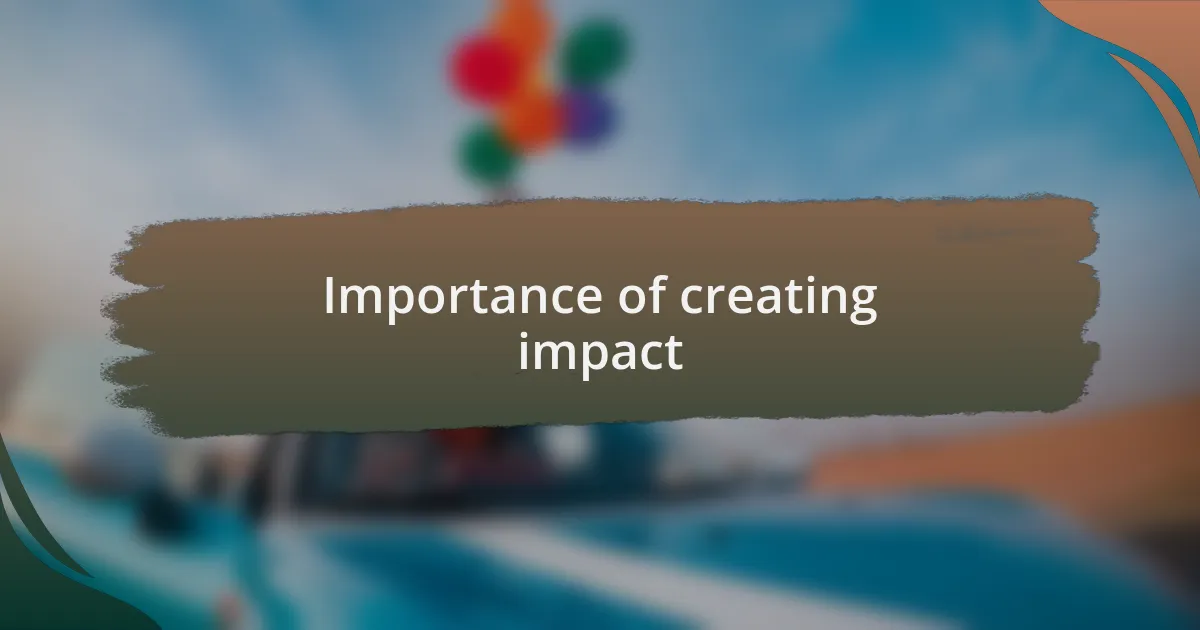
Importance of creating impact
Creating a real impact in women’s health advocacy is crucial because it translates awareness into actionable change. I remember my first advocacy meeting, where I saw firsthand how collective voices could influence policy. It was eye-opening to recognize that each story shared had the potential to spark legislative improvements, reminding me that every effort counts.
The importance of making an impact extends beyond the immediate circle of advocates and patients; it resonates throughout entire communities. I often think, how many women are quietly suffering in silence, unaware of the resources available to them? When we create impact, we empower these women to seek help, educate themselves, and become advocates for their own health, thereby promoting a ripple effect of awareness and action.
Ultimately, creating impact shapes the future of women’s health advocacy itself. I’ve experienced the powerful shift when we frame discussions around the lived experiences of women; it leads to stronger connections and a sense of belonging. Imagining a future where every woman feels supported and understood fuels my commitment—what motivates you to be part of this journey?
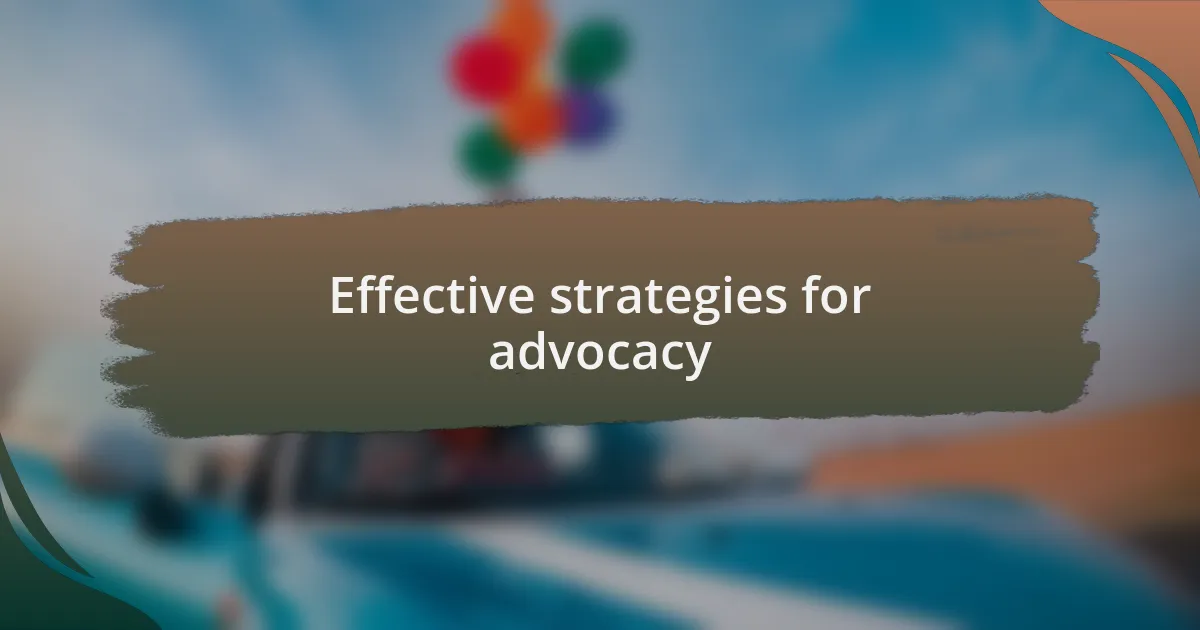
Effective strategies for advocacy
One effective strategy for advocacy is building strong networks within local communities. When I organized a workshop on women’s health issues, it was incredible to see how many professionals and advocates came together to share resources and support. It made me realize that collaboration amplifies our voices and makes us more impactful.
Another strategy is harnessing the power of storytelling. During a campaign I was part of, we invited women to share their experiences with reproductive health challenges. I was struck by how these stories brought human faces to the statistics; as people connected emotionally with real experiences, our message became more relatable and inspiring. Isn’t it fascinating how authenticity can drive change?
Lastly, diversifying outreach methods can significantly enhance advocacy efforts. I once experimented with social media campaigns and traditional flyers, and the response was enlightening. While online platforms allowed for broader reach, I found that in-person discussions were equally vital for fostering trust and deeper understanding. Which methods leave the biggest impact on you?

Building a support network
Building a support network is essential in creating a strong foundation for advocacy. I remember attending a community event where a diverse group of women gathered to discuss health disparities. The energy in that room was palpable; it was a mix of shared concern and collaborative spirit. That day highlighted for me just how powerful it can be to connect with others who have similar goals. Isn’t it amazing how a network can provide not just resources but also emotional encouragement?
When I reached out to local organizations for support on a women’s health project, my network expanded in ways I hadn’t anticipated. I discovered mentors, allies, and even friends who were already invested in the cause. This collaboration opened doors I had never considered before. Have you ever experienced the magic of a supportive community lifting you up and pushing the mission forward?
Creating a robust support network takes intention and effort. I often host informal meet-ups where we can discuss our challenges and successes in advocacy. These gatherings foster trust and ensure that everyone feels valued. I’ve noticed that when people feel connected, they become more willing to share their experiences and resources. How rewarding it is to witness women rallying around one another!
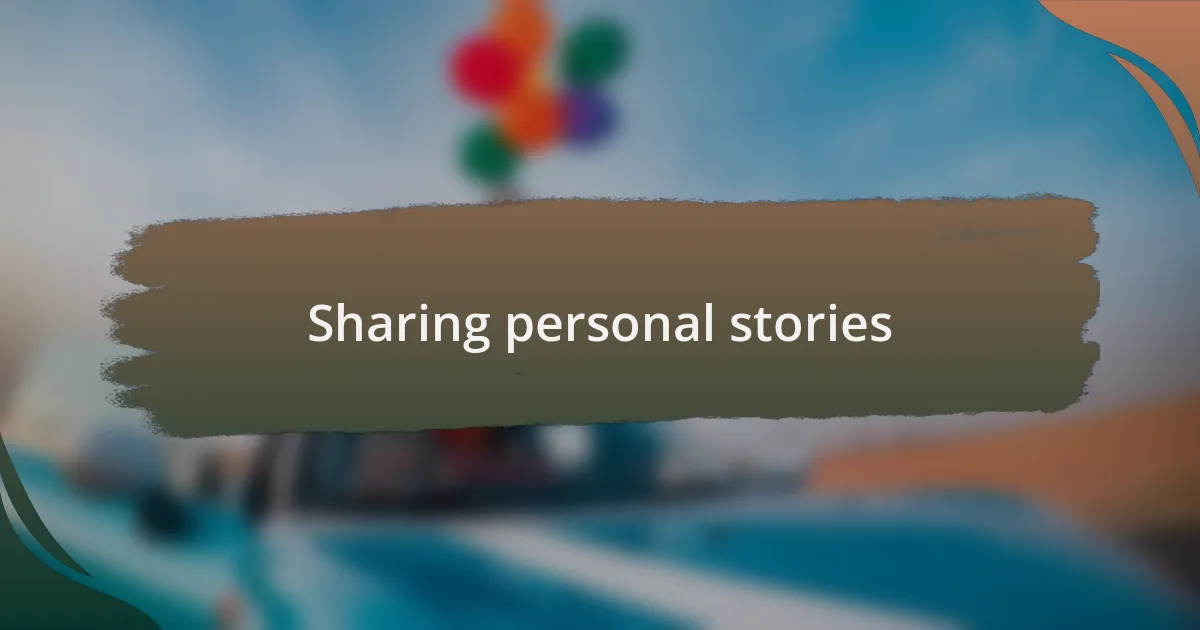
Sharing personal stories
Sharing personal stories in advocacy holds immense power. I vividly recall the first time I shared my own journey with endometriosis during a local health fair. The room fell silent, but soon, several women approached me to share their own struggles. It was a raw moment of connection, and I felt a wave of relief knowing I wasn’t alone. How often do we underestimate the impact of our vulnerability in creating bonds that can lead to change?
I’ve found that these stories are not just anecdotes; they are catalysts for action. One evening, while chatting with a friend over coffee, she recounted her battle with postpartum depression. The way she articulated her experience moved me deeply and ignited a spark in our conversation about support resources in our community. It struck me then that these personal narratives serve as a bridge, connecting the personal to the universal. Have you ever felt inspired by someone’s story, prompting you to take action in your own life?
Moreover, sharing our stories can create a ripple effect of awareness and understanding. I recently organized a panel where women shared diverse experiences related to women’s health. Each tale underscored unique challenges, yet common themes of resilience emerged. Seeing listeners nod in recognition and empathy was powerful; it reminded me of how sharing can breed solidarity. Isn’t it incredible how one story can resonate and inspire change in someone else’s journey?
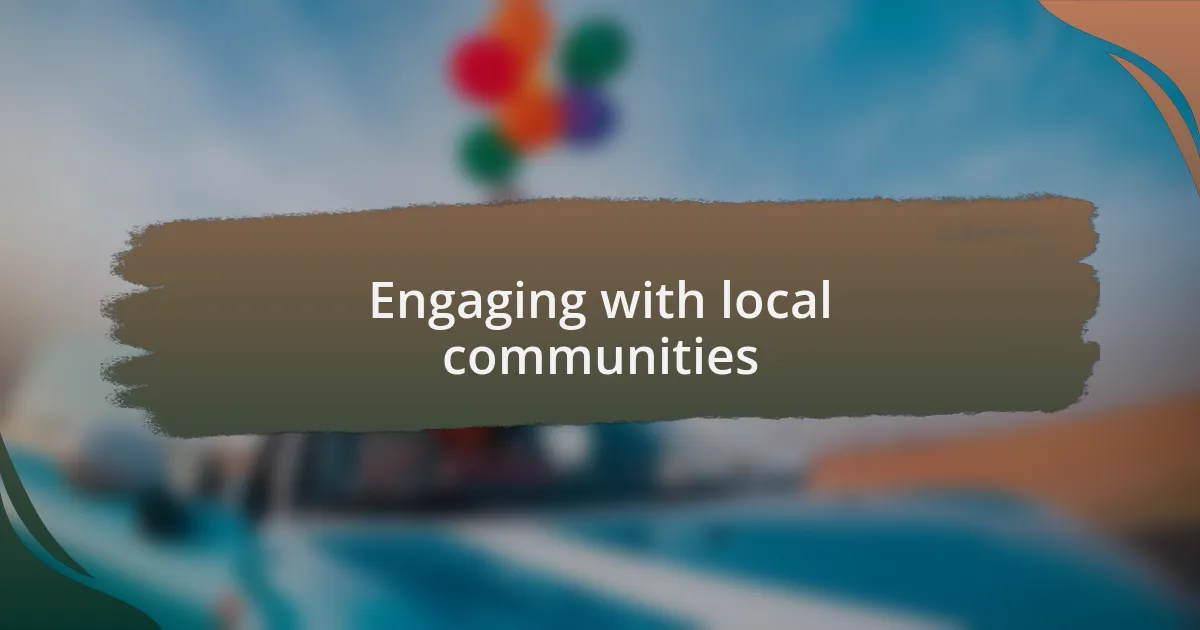
Engaging with local communities
Engaging with local communities is a vital aspect of advocacy that I’ve experienced firsthand. I remember attending a neighborhood workshop focused on women’s health. The energy in the room was palpable as women shared their concerns about access to care and the stigma surrounding reproductive health issues. It was one of those moments where I realized how powerful it is to be part of a collective voice; did you ever feel the strength that comes from unity?
In my experience, forming partnerships with local organizations amplifies our efforts significantly. I collaborated with a community center to host a health screening event. The turnout exceeded our expectations, and I saw women of all ages come together, not just to access healthcare but to engage in conversations about their experiences. It made me appreciate how crucial it is to create spaces where women feel safe to discuss their health challenges. What do you think happens when a community feels empowered to advocate for itself?
Moreover, as I look back on these engagements, I realize that there’s an incredible richness in listening. During one event, I met a woman who had started a support group for survivors of domestic violence. Her vulnerability and courage in sharing her story encouraged others to open up about their struggles, leading to a blossoming network of support. This taught me that engaging with local communities isn’t just about providing services; it’s about creating an environment where healing and empowerment thrive together. What could be more impactful than that?
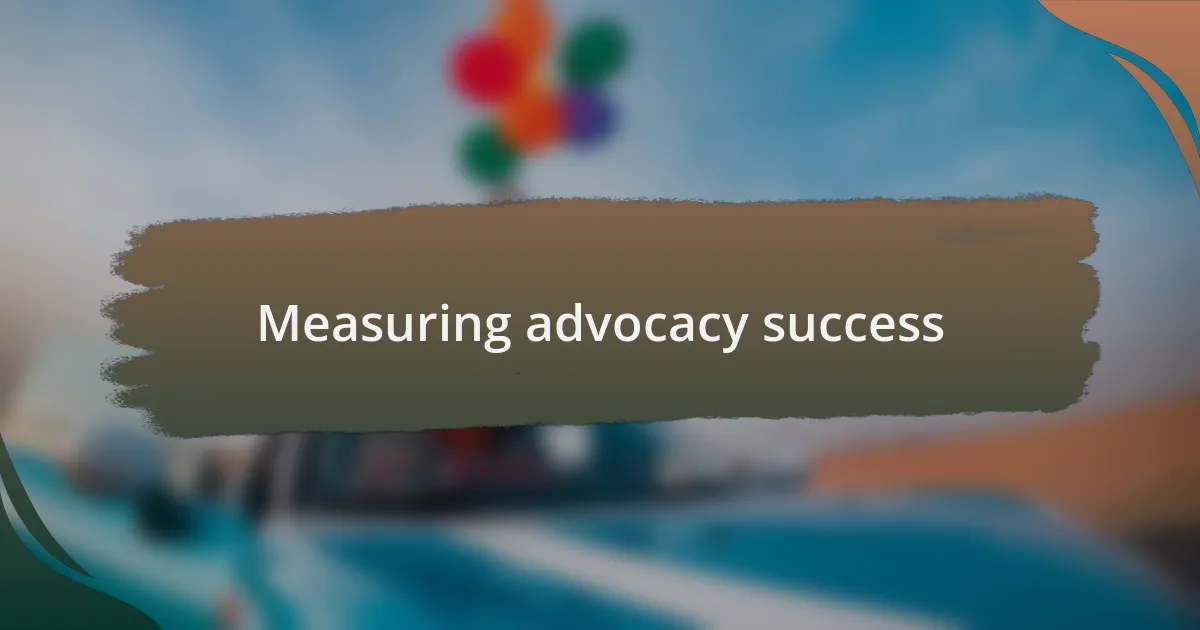
Measuring advocacy success
Measuring the success of advocacy efforts can often feel elusive, but I’ve found that tracking specific outcomes makes a significant difference. For instance, after hosting a series of health workshops, I noticed an uptick in women seeking preventive care. This tangible change reinforced the idea that our advocacy was resonating, showing me just how impactful education can be. Have you ever measured success in a way that surprised you?
In my journey, I’ve discovered that qualitative feedback is equally essential. After one initiative, I received heartfelt testimonials from participants who felt empowered and informed. These personal stories were not just gratifying; they provided a deeper understanding of my impact, revealing nuances of how advocacy ripples through the community. How often do we take a moment to listen to these voices?
Data and stories combined create a compelling narrative of success. For example, when I analyzed participation rates before and after an event, the stark contrast highlighted our growing influence. It became clear that success isn’t solely about numbers; it’s about fostering connections and enhancing lives. To me, that dual approach paints a much richer picture of advocacy in action. What do you think is most important in measuring the impact we create?